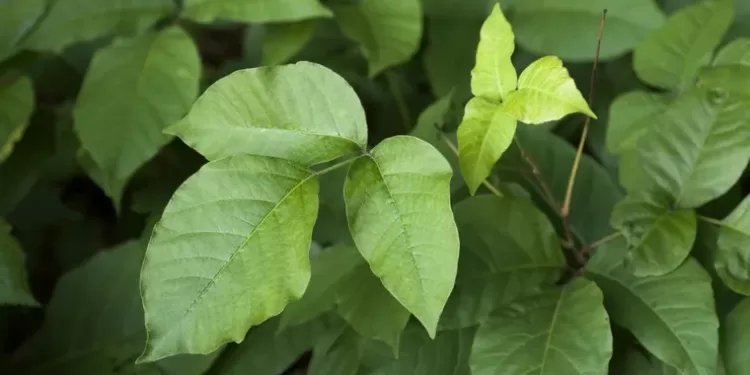“Leaves of three! Allow them to be.”
“Furry vine, no buddy of mine!”
These widespread adages assist us stay watchful for an unwelcomed yard presence: poison ivy.
The plant is flourishing with local weather change and land improvement. And as we enterprise out to relish the late summer season climate, you will need to have the ability to establish, stop and deal with poison ivy.
Poison ivy belongs to the Toxicodendron household of crops, which incorporates poison ivy, poison oak and poison sumac. When injured, these crops launch urushiol, an oily resin that causes the infamous rash.
Poison ivy, widespread in Jap states, grows as a shrub or vine that may attain spectacular heights. Its leaves are manufactured from three leaflets and the vines have small identifiable “hairs,” which assist it climb timber. The leaves may be shiny and might have rounded notches or “thumbs.”
Keep in mind that it’s direct contact between the pores and skin and the resin that causes the rash. The resin can be unfold from the fur of pets onto human pores and skin.
Wherever the contact occurred is the place the rash can develop. This causes the rash to look in shapes that resemble traces or splashes on the pores and skin, a key diagnostic clue. The rash types small fluid-filled blisters that ooze. The itch is commonly extreme, will worsen with scratching, and might intervene with sleep. Uncommon circumstances brought on by aerosolization of the resin from burning brush or forest fires can result in extreme airway reactivity and require emergency care.
The resin can stay lively in lifeless crops for years, which is why the rash can even happen within the winter.
We’re not born allergic to poison ivy. It requires repeat publicity resulting in sensitivity over time. When you develop the response, you stay allergic, and the vast majority of people are allergic.
You can’t get poison ivy by touching another person’s blisters or blister fluid. This brings us to a different widespread false impression: You can’t unfold the rash by scratching it. The poison ivy rash is a delayed hypersensitivity response. It takes a number of hours to days after contact earlier than the rash seems. The complete response would possibly develop over two weeks or so, giving the impression that the blisters could also be “spreading” from scratching throughout that point.
What to do for those who come into contact with poison ivy? Wash uncovered areas with copious quantities of water, ideally inside 20 minutes of publicity. Keep away from scrubbing with cleaning soap as this could break up and unfold the resin in your pores and skin. It’s a good suggestion to scrub uncovered pores and skin and pets after actions akin to climbing and gardening in case there was contact.
Remedy will depend on severity. If the rash is restricted or signs are delicate, over-the-counter hydrocortisone 1% cream and lotions with pramoxine or calamine can scale back itch. Epsom salt soaking can dry up the blisters. Keep away from Benadryl cream or Neosporin, as these can create extra reactions on the pores and skin.
Cool compresses, icing, and utilizing topical therapies that had been saved within the fridge supply quick aid. When you’ve got extreme signs akin to widespread involvement, fever or intense swelling, name your doctor instantly. Extreme circumstances may be handled with prescription topical steroid lotions or oral or injectable steroids.
Elizabeth Jones is an assistant professor within the division of dermatology and cutaneous biology at Jefferson College.











